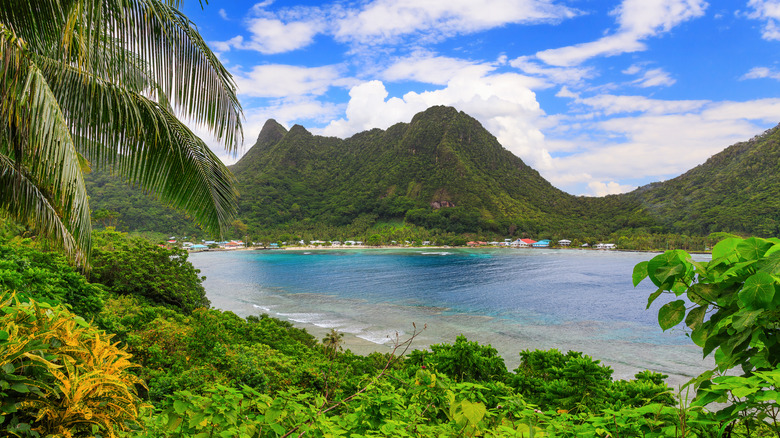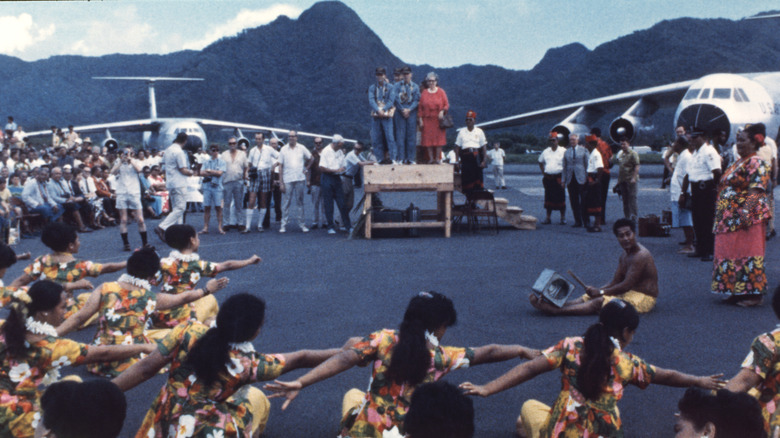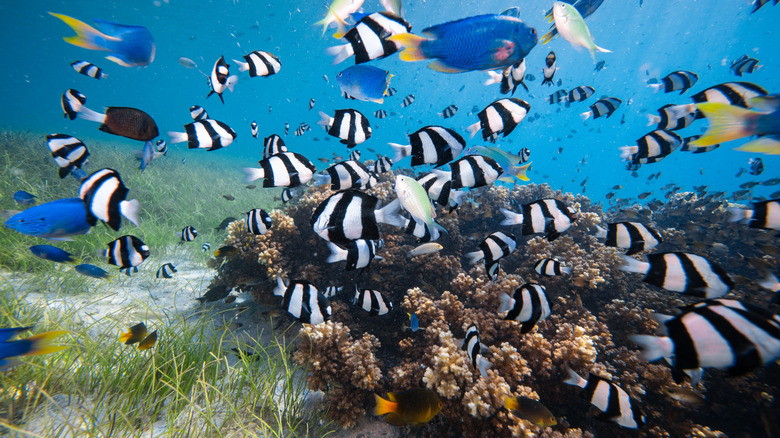The Largest South Pacific Island In This U.S. Territory Is Known For Its WWII History, Coral Reefs, And National Park
Pack away your passport: This enchanting U.S. island has all the beauty of the South Pacific, and none of the visa hassles. A treasure trove of history, from WWII to the Apollo program, this unique island has stunning coral reefs and its own tropical national park, and it is a U.S. territory.
The jewel in the crown of American Samoa, the volcanic island of Tutuila is not only the largest in the U.S.-owned Samoan territories, it is also the place most of the population calls home. Its petite surface of 55 square miles (roughly the size of Baton Rouge, Louisiana) is packed with deep turquoise beaches, coral reefs perfect for snorkeling, and a multitude of highlights connected to key historic events, from WWII batteries to relics of Apollo missions.
The easiest way to visit this beautiful island is by flying to the capital of Pago Pago, which has its own international airport. Though Hawaiian Airlines is the only one currently offering direct flights and only from Honolulu, you can still fly to Pago Pago with one or two stops from most U.S. airports, with return flights ranging from $800 up to $4,000 depending on the season. Arranging travel to American Samoa can put a dent in your wallet, so planning in advance for the best time to go can be essential if you are on a budget. According to aggregator FlightsFinder, September is the cheapest month to fly to Pago Pago, with fares around $800, whereas flying in August may cost you over $1,300. It pays off to head to American Samoa during shoulder season, just like for other tropical destinations like Maui, where one of the best times to visit is during fall, with fewer crowds.
Tutuila has a wealth of history, from World War II to space missions
As the Pacific became a key region in the war due to its proximity to Japan, American Samoa soon became part of the war effort. The island saw both an influx of military personnel from mainland U.S., and the retraining of its local navy unit Fitafita Guard (Fitafita meaning soldier) as sea defenses. When Tutuila received a shell attack from a Japanese submarine in 1942, islanders and the U.S. Military feared the attack was the first of many. That's when military presence was increased –- with over 5,000 members of the Marine Brigade sent to the island the week following the shelling. But the fear was luckily unfounded, as military operations were disbanded by 1944, leaving American Samoa with only one attack during the war. Today, you can visit WWII relics across the island, such as Blunts Point Trail, a hiking trail that is part of the larger WWII Heritage Trail. Blunts Points Trail leads to a former battery and traverses beautiful tropical forests and rocky terrain, and the Jean P. Haydon Museum, hosting collections on American Samoan history, including war relics, uniforms, and other military memorabilia.
While the island may lack the launch pads that propelled American astronauts into the great beyond, American Samoa played an important role in several Apollo program rescue and return missions throughout the 1960s and 1970s. The much awaited return of the Apollo 12 to earth happened in American Samoan water, where it splashed down before making its way back to Houston. And indeed, when Apollo 13 came back home, its first stop was in the capital Pago Pago, where Samoan performers welcomed the returning astronauts with a traditional dance and ceremony.
Explore pristine coral reefs and the National Park of American Samoa
Tutuila's World War II sites and relics may not have the same caché as Hawaii's Pearl Harbor, which even has its unique themed historic tour. But when it comes to natural beauty and coral reefs, this Pacific island can give good old O'ahu a run for its money. Starting with the National Park of American Samoa, which is the only one of 433 U.S. national parks in the South Pacific, and to sit below the Equator. With a mission to preserve its tropical rainforest and unique fauna, the park is divided across three islands: Tutuila, Ta'ū, and Ofu. The Tutuila side is the most accessible, with hikes of various levels, as well as plenty of water activities, and beautiful, secluded beaches. Head to the visitor center first thing when you arrive to grab a handy map of the park, and check the notice board for announcements, and unique wildlife sightings.
About 4,000 acres of the park are underwater, where you can continue your exploration with snorkels on. This area is a snorkeler's dream, with perfectly preserved coral reefs rife with multicolor tropical fish, squid, and even small sharks. Keep your eyes peeled for Fale Bommie (or Big Momma), one of the largest coral formations in the world (it can grow as tall as 20 feet).
The bounty of the Pacific sea is also reflected in the wider economy of American Samoa, with fishing (in particular tuna) being its leading industry. If you are fascinated by the production on this beautiful island, you can add a slightly quirky stop in Pago Pago's StarKist tuna canning factory, where the giant statue of mascot Charlie the Tuna is a popular spot for selfies.


